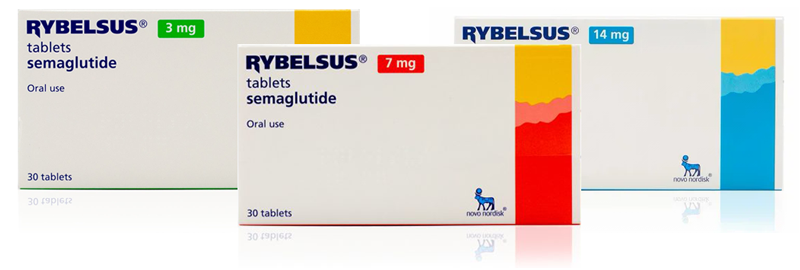Introduction to Rybelsus:
Rybelsus is the commercial name for semaglutide, a medicine classified as glucagon-like peptide-1 (GLP-1) receptor agonists. It’s generally used to treat type 2 diabetes, but it’s also been shown to help with weight reduction. Anyone contemplating or being prescribed Rybelsus should understand its applications and mechanism of action.
Uses of Rybelsus:
Rybelsus is used as a supplement to diet and exercise to enhance glycemic control in persons with type 2 diabetes. It is usually recommended when diet and exercise alone do not provide appropriate glycemic control. Rybelsus is also FDA-approved for lowering the risk of severe adverse cardiovascular events (cardiovascular mortality, nonfatal myocardial infarction, or nonfatal stroke) in persons with type 2 diabetes mellitus and preexisting cardiovascular disease.
Mechanism of action:
Rybelsus works by imitating the actions of the hormone glucagon-like peptide-1 (GLP-1) in the body. GLP-1 is naturally created in the gut in response to food intake and plays an important function in blood sugar regulation. However, in those with type 2 diabetes, the body may not create enough GLP-1 or respond to it well.
When consumed orally, Rybelsus stimulates GLP-1 receptors in the pancreas, brain, stomach, and other organs. This activation has various positive benefits.
Rybelsus stimulates the secretion of insulin from the pancreas in response to high blood sugar levels. Insulin is a hormone that transports glucose from the circulation to cells, where it can be utilized for energy or stored for later use. Rybelsus reduces blood sugar levels by boosting insulin secretion.
Rybelsus also reduces the secretion of glucagon, a hormone produced by the pancreas. Glucagon increases blood sugar levels by encouraging the liver to release stored glucose into the circulation. Rybelsus inhibits glucagon secretion, which helps to avoid excessive glucose synthesis in the liver.
Rybelsus reduces gastric emptying, which helps to minimize postprandial (after-meal) blood sugar rises. This impact also leads to a sense of fullness and can help with weight reduction by decreasing hunger and food consumption.
Central Nervous System Effects: Rybelsus passes the blood-brain barrier and operates directly on the brain, regulating hunger and food intake. It promotes satiety (a sense of fullness) and reduces appetite, resulting in decreased food consumption and probable weight reduction.
Dosage & Administration:
Rybelsus is available in two main doses for diabetic treatment: 3 mg and 14 mg. For most individuals with type 2 diabetes, the recommended beginning dose is Rybelsus 3 mg once day for 30 days, followed by an increase to the maintenance dose of Rybelsus 14 mg once daily. Rybelsus must be taken exactly as recommended by your healthcare professional, either with or without meals, depending on your individual instructions.
Clinical studies on weight loss:
In addition to its primary prescription for diabetes control, Rybelsus has been investigated for its ability to help in weight loss. Clinical investigations have shown that persons with type 2 diabetes who took Rybelsus lost much more weight than those who received a placebo. For example, a research published in The Lancet discovered that individuals who took Rybelsus 14 mg daily lost more weight throughout the trial than those who received a placebo. This weight reduction was maintained over time, demonstrating the medication’s long-term effectiveness in weight control.
Safety and Side Effects:
Rybelsus is typically well-tolerated, but like with any medicine, it might have adverse effects. Common adverse effects include nausea, vomiting, diarrhea, and constipation, particularly upon commencing the medicine. These adverse effects usually improve with time as your body responds to the medicine. Rybelsus may also raise the risk of hypoglycemia (low blood sugar) when used with other antidiabetic drugs, notably insulin or insulin secretagogues.
Conclusion:
Rybelsus is a drug used to treat type 2 diabetes mellitus that has been found to enhance glycemic control and minimize the risk of cardiovascular events in individuals with this disease. It works by replicating the actions of the hormone GLP-1, which regulates blood sugar levels, promotes weight reduction, and reduces hunger. Rybelsus is available in two doses: rybelsus 3 mg and rybelsus 14 mg, and is usually taken once a day with or without meals. While Rybelsus is typically well tolerated, it might produce nausea and vomiting, particularly when first starting the medicine. Overall, Rybelsus can be a useful treatment choice for those with type 2 diabetes who want to improve their glycemic control and perhaps lose weight. As usual, consult with your healthcare professional to establish whether Rybelsus is correct for you and to track your progress while taking the medicine.





